Read Time - 6 Minutes
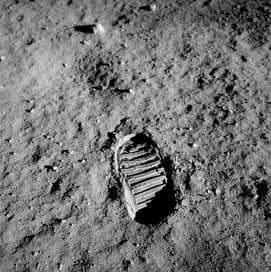
On this date in 1969, Apollo 11’s lunar module—the Eagle—landed in the Sea of Tranquility on the surface of the moon. Shortly thereafter, Commander Neil Armstrong stepped off the Eagle’s ladder and became the first man on the moon.
Fast-forwarding ahead 47 years, it strikes me that many elements of the Apollo 11 mission run parallel to how we define effective recognition at our company. Or maybe I’m just a bit of a space wonk. Either way, just work with me here.
Effective recognition can take you to the moon if you…
1. Use Meaningful Symbols
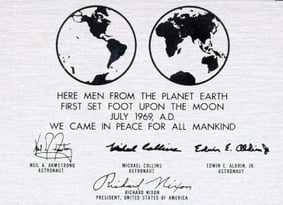
The metal placard mounted to the ladder of the lunar module of Apollo 11. This segment of the craft remains on the moon’s surface.
Since I’m in the plaque business, I think about plaques quite a bit. (It’s hardly the strangest thing about me, so I’m good with it.) I imagine extraterrestrial explorers finding this plaque long after we’re gone and wonder how they would decipher what it says and what it means. The Earth, as a symbol on the plaque, would be pretty meaningful. Especially when these creatures look up at the sky and see it for themselves. Assuming they have eyes.
Carried out at the highest level, an award does the same—it evokes symbols that transcend industry, language, and time. These symbols are equally meaningful (perhaps for different reasons) to all parties involved—the presenter, the recipient, and the peer audience.
Speaking of which…
2. Inspire Peers

An estimated 528,000,000 people were watching the live broadcast as the lunar module touched down. 93% of American televisions that were on were tuned in. (What on Earth—literally—were the other 7% watching?)
More than half a billion people were watching as three men—backed by 420,000 people employed in the task of reaching the moon—touched down on terrain more than a quarter million miles away. How many kids were inspired to become astronauts, scientists, mathematicians, engineers, or pilots at that moment?
That’s the way a well-constituted award program works. To motivate others by virtue of special and public recognition. An awards program serves notice to colleagues that accomplishment yields reward. The ROI of a recognition program lies within the enhanced performance of the peer group—the proverbial high tide raising all boats.
3. Reinforce Core Values
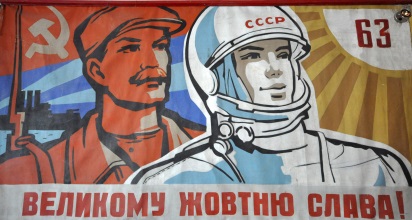
“Propaganda” is one of those funky words that walks a fine line of connotation—it’s part PR, part brainwashing. A properly designed and executed award program functions as a form of propaganda, summoning specific value messages.
A well-positioned award will answer questions such as:
- What is important to the presenting organization?
- What does the organization stand for?
- How is the organization communicating its value mission?
- At what level is the recipient engaged in the organization’s core values?
4. Measure Performance
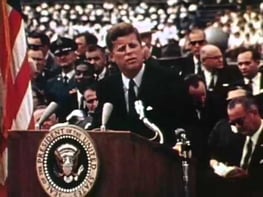
“I believe that this nation should commit itself to achieving the goal, before this decade is out, of landing a man on the moon and returning him safely to the earth.”
– President John F. Kennedy, 1961
Awards are not given, they are earned in response to a specific and measured goal or challenge. This runs in opposition to today’s “everybody’s a winner” culture. The truth is, not everyone is a winner—only the winner is the winner.
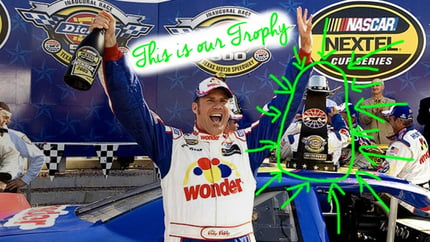
(“If ya ain’t first, you’re last.” – Ricky Bobby)
In our business, it’s typical to see 15-20% of the total pool of people being recognized at some level. If it’s not earned by way of a specifically measurable accomplishment, what’s the value? The old adage “If it doesn’t cost anything, it’s not worth anything,” certainly holds true. Cost, in this case, is measured by effort.
5. Make It Highly Personalized

At 02:56:15 UTC on July 20, 1969, Armstrong touched his foot to the surface of the moon, delivering his famous line shortly thereafter. And followed, thenafter by the others, who unlike Neil, often go unrecognized.
The power of an individual’s name—spelled and pronounced correctly, of course—is irrefutable. As a currency, the human ego is perhaps more valuable than any other. It must be coveted and dispensed wisely.
6. Emphasize Specific Images
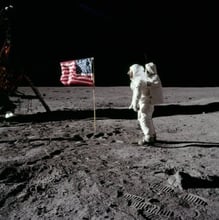
It’s not a coincidence that the first images transmitted on MTV in 1981 were a montage of the Apollo 11 landing, including an altered version of the photo above. The imagery was point-blank and crystal clear.
Likewise, truly valuable awards programs utilize elements that are easily recognized. Logos, product/mascot/founder images, and slogans/taglines, to name a few. Our attention span has dwindled to 8 seconds—if we don’t get it by then, we probably won’t. (Squirrel!) Our cognitive faculties are approaching their speed limit, so make sure the awards you offer make their mark.
Go Forth And Be Effective
The journey to effective recognition is filled with challenges. Maybe not quite as treacherous as those encountered by the Apollo missions, but there are certainly obstacles that can snare you along the way. And it is a journey, so you’ll need proper navigation and a thorough mission checklist. Following these footsteps will lead you and your client to unexplored worlds, and you will have accomplished your primary mission!
 Dave Miller is VP of Sales & Marketing at Bruce Fox, Inc. who is finally making some use of his English degree by writing this blog. He has been with Bruce Fox since 1990, the year the Reds last won the World Series. He would weigh about 31 pounds on the surface of the moon. The goal of his blog is to “edu-tain” (educate + entertain) promotional products distributors, with a focus on custom work. Dave finds it very awkward to write about himself in the third person.
Dave Miller is VP of Sales & Marketing at Bruce Fox, Inc. who is finally making some use of his English degree by writing this blog. He has been with Bruce Fox since 1990, the year the Reds last won the World Series. He would weigh about 31 pounds on the surface of the moon. The goal of his blog is to “edu-tain” (educate + entertain) promotional products distributors, with a focus on custom work. Dave finds it very awkward to write about himself in the third person.








